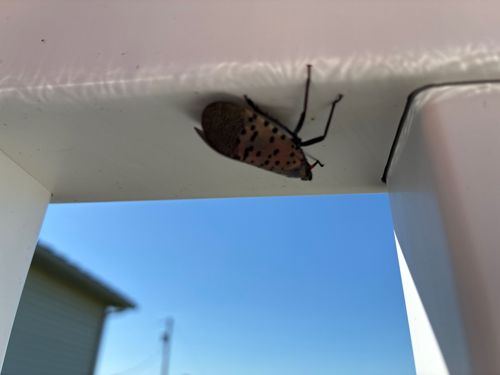Spotted Lanternfly
Scientific Name: Lycorma delicatula
Order & Family: Hemiptera, Fulgoridae
Size: Adults are approximately 1 inch (2.5 cm) long and 0.5 inch (1.2 cm) wide.

Natural Habitat
Originally from Asia, it is an invasive species in North America, found in vineyards, orchards, forests, and residential areas, particularly on the 'Tree of Heaven' (Ailanthus altissima).
Diet & Feeding
It feeds on the sap of a wide variety of plants (over 70 species), using its piercing-sucking mouthparts. Preferred hosts include Tree of Heaven, grapevines, fruit trees (apple, peach, cherry), and maples.
Behavior Patterns
Spotted Lanternflies lay egg masses covered in a waxy, mud-like substance on smooth surfaces like trees, rocks, outdoor furniture, and vehicles. Nymphs hatch in spring and go through several instars before maturing into adults in summer. They tend to aggregate in large numbers, particularly during late summer and fall. Adults are known to 'hop' or jump when disturbed, and can fly short distances.
Risks & Benefits
This insect poses a significant risk as an invasive pest, especially to agricultural crops such as grapevines, hops, and fruit trees, as well as to significant forest resources. It causes damage by feeding, which can stress plants and lead to reduced yields or plant death. It also excretes large amounts of 'honeydew,' a sugary substance that promotes the growth of sooty mold, coating plants and property, reducing photosynthesis, and attracting other insects. There are no known benefits, and it is considered a serious economic and ecological threat.
Identified on: 10/5/2025